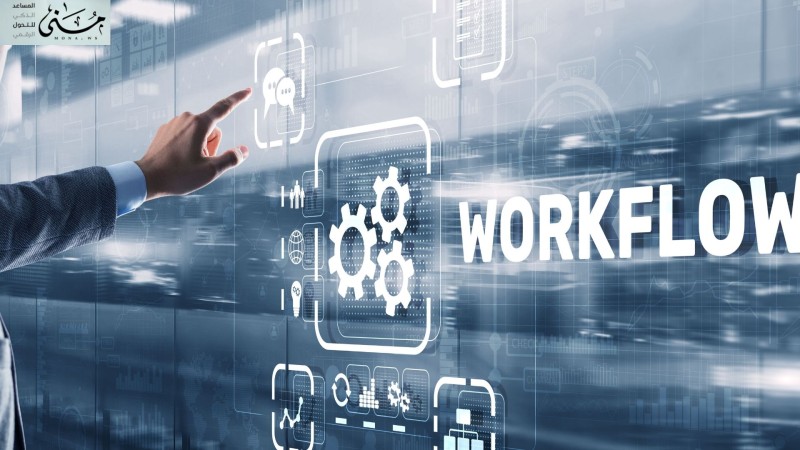In this article, we will learn about the most important and latest electronic archiving solutions for large institutions.
What is electronic archiving?
Electronic archiving is not just a means of storing documents, but rather a comprehensive strategy for improving administrative performance. It is defined as the process of organizing and preserving documents and records in digital form using computing technologies and software systems, with the aim of facilitating the management and retrieval of information faster and more efficiently compared to traditional paper methods.
Archiving includes storing documents in an organized manner so that they can be accessed quickly and easily, with the possibility of protecting sensitive or confidential data, and ensuring that they are preserved for the longest possible period without damage or loss. The importance of electronic archiving lies in:
Organize and protect documentsElectronic archiving provides an integrated system for preserving digital documents away from traditional risks such as damage or loss.
Administrative efficiencyModern systems allow easy retrieval of documents, which reduces the time spent on administrative processes.
Legal ComplianceArchiving helps comply with legal standards regarding data preservation.

Important statistics about electronic archiving
According to recent studies, organizations that adopt automated archiving achieve a 25-30% increase in productivity, and cybersecurity reports indicate that advanced digital systems reduce the risk of data loss by up to 40%.
Integrated systems help large organizations reduce paper-related expenses by 50% within the first three years of implementation.
Evolution of electronic archiving solutions
Archiving systems have witnessed significant developments thanks to artificial intelligence technologies and smart analysis tools. These developments include:
Switching from paper to digitalModern systems contribute to the complete automation of processes, reducing reliance on paper documents.
Manage permissionsArchiving systems offer flexibility in user management, as it is possible to specify who has the right to view or modify.
Systems IntegrationToday's archiving systems are able to integrate with other applications used in organizations, providing centralized and efficient management.
Benefits of electronic archiving in improving operational efficiency
Electronic archiving directly contributes to reducing the time required to complete daily tasks related to document management. Through modern electronic archiving technologies, organizations can reduce the administrative burden imposed on employees as a result of dealing with paper documents. These systems also allow for tracking and updating documents instantly, which reduces errors and contributes to improving the accuracy of administrative processes.
A living example of this is integrating archiving with other tools such as ERP systems.ERP to easily complete auditing and reporting processes, and here comes the role of solutions such as “DocSuite” that provide flexible platforms that can be integrated with other corporate systems to ensure an integrated experience.
Here we explain the most important benefits of electronic archiving in this context:
Improve time management
This is through quick access to information. Instead of manually searching for paper files, digital documents can be easily retrieved using keywords or categories.
Reduce wasted time: Electronic archiving reduces the time spent searching for documents by up to 50%, allowing employees to focus on key tasks.
Reduce human error
Reduces document loss, as digital files are stored in an organized and secure manner, reducing the chances of loss or damage.
Electronic archiving systems can reduce duplicate entries. Electronic systems such as DocSuite rely on artificial intelligence to reduce errors resulting from manual entry or repetition.
Strengthening internal cooperation
Employees in different departments can access the same documents at the same time, without having to send duplicate copies or print documents.
Modern archiving makes remote work easier, boosting the productivity of teams working remotely or in multiple locations.
Reduce operating costs
Reduces reliance on printing and paper, resulting in significant budget savings.
Files are stored digitally, saving the costs of renting storage space for paper documents.
Support rapid decision making
Modern archiving enables information to be managed instantly and accurately, supporting decision-making based on up-to-date data.
Some systems provide reports and analysis that help management evaluate performance and improve operations.
Ensure compliance and transparency
Digital archiving ensures that documents are stored in accordance with security standards and regulatory policies, enhancing compliance.
Archiving provides accurate records of any action taken on documents, enhancing transparency.
Strengthening cyber security
Modern systems rely on encryption and anti-hacking technologies.
Setting access permission levels ensures that sensitive documents are only accessible to authorized individuals.
Business Continuity and Sustainability
Modern archiving ensures that backups are available in case of disaster or data loss.
Reducing reliance on paper enhances the organization's orientation towards environmentally friendly practices.
DocSuite is a leading example of applying modern archiving to improve operational efficiency. It features an easy-to-use interface, advanced document organization capabilities, and AI-based automation technologies to speed up processes, making it an ideal choice for organizations aspiring to digitally transform.
The difference between paper and electronic archiving
The transition from paper to electronic archiving is one of the most important challenges facing large institutions. The main difference between them lies in speed and efficiency, as paper archiving requires large storage spaces and is exposed to wear and tear, while electronic archiving allows documents to be saved in a digital format that can be searched and modified.
For example, a document that might take hours to access using paper archiving can be retrieved in seconds using electronic archiving systems such as DocSuite, which rely on optical character recognition technology.OCR to convert documents into searchable digital copies, making them more efficient and accurate in dynamic work environments.
Challenges Facing the Implementation of Electronic Archiving in Large Institutions
Despite the many benefits of modern archiving systems, there are a number of challenges that may hinder their adoption in large organizations, the most prominent of which are:
Resistance to change
Organizations often face resistance from employees when moving to new systems. Some may feel that electronic archiving technologies are complex or unfamiliar. This challenge can be overcome by providing comprehensive training programs and workshops that demonstrate the practical benefits of the system.
Initial investment costs
Although modern archiving systems provide a tangible return in the long run, the initial cost of implementing these systems, including purchasing software, hardware, and staff training, can be high. With systems like DocSuite, solutions can be customized to fit different organizations’ budgets, reducing financial pressure.
Security and data protection
One of the biggest concerns when implementing modern archiving is the possibility of data being compromised. Organizations need systems that provide advanced levels of security such as encryption, access privilege management, and multiple sign-ins. DocSuite is an example of a solution that offers multiple layers of protection to ensure data integrity.
Compatibility with existing systems
Organizations face challenges in integrating modern archiving systems with existing systems. The success of this integration depends on choosing flexible and compatible systems such as DocSuite, which provides APIs for seamless integration with ERP and HR management software.
Best practices for successful implementation of electronic archiving
To ensure the success of the electronic archiving implementation, organizations must follow a set of practices that include:
- Develop a comprehensive electronic archiving strategy that includes clear, phased objectives.
- Choosing the right system like DocSuite, which is flexible and adaptable to your business needs.
- Invest in staff training to ensure the team knows how to use the system most efficiently.
- Hire technical consultants to ensure proper setup and integration of the system with existing systems.
With the great development in cloud computing technologies, relying on cloud archiving has become a strategic choice for many organizations. Cloud computing provides advantages such as storing data without spatial restrictions, facilitating access to documents from anywhere and at any time, and solutions such as "Doc Suite" provide electronic archiving services in a secure and advanced manner, and allow organizations to benefit from this technology with maximum efficiency.
 تمثل الأرشفة الإلكترونية نقلة نوعية في طريقة التعامل مع الوثائق
تمثل الأرشفة الإلكترونية نقلة نوعية في طريقة التعامل مع الوثائق











Comments
Add New Comment